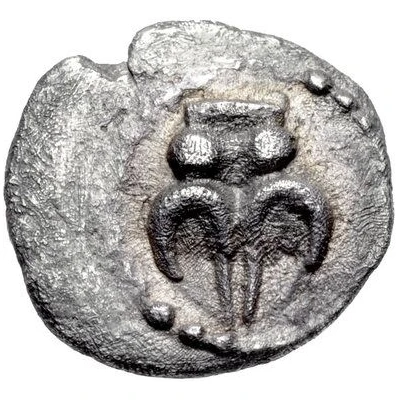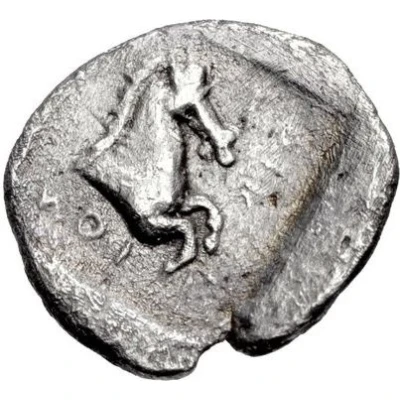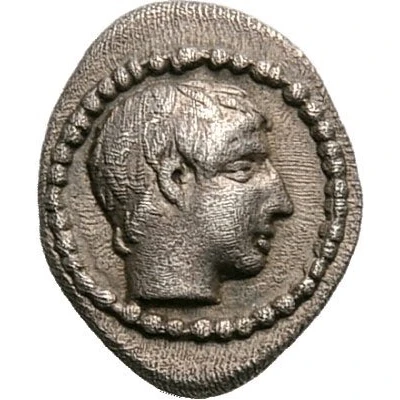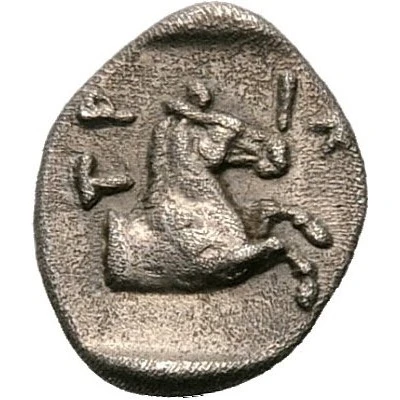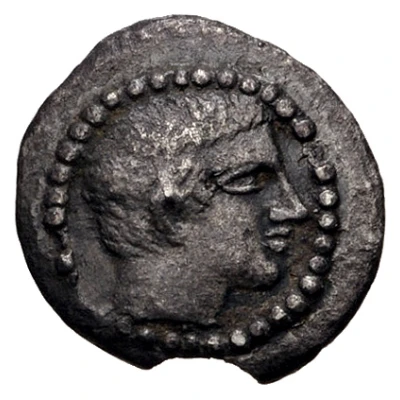
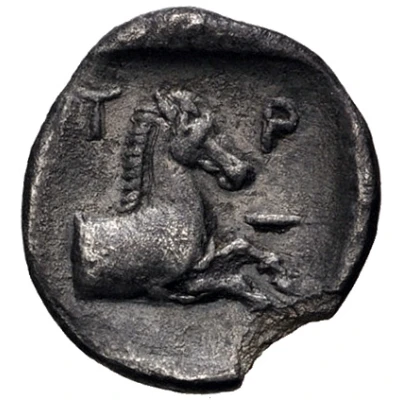

© Classical Numismatic Group, Inc.
Hemiobol 440 BC - 400 BC
| Silver | 0.35 g | 9.0 mm |
| Issuer | Trikka (Thessaly) |
|---|---|
| Type | Standard circulation coin |
| Years | 440 BC - 400 BC |
| Value | Hemiobol (1⁄12) |
| Currency | Drachm |
| Composition | Silver |
| Weight | 0.35 g |
| Diameter | 9.0 mm |
| Shape | Round (irregular) |
| Technique | Hammered, Incuse |
| Demonetized | Yes |
| Updated | 2024-10-10 |
| Numista | N#145633 |
|---|---|
| Rarity index | 100% |
Reverse
Forepart of a horse facing right within an incuse square
Script: Greek
Lettering: TPI
Comment
Apparently unpublished.
Interesting fact
The Hemiobol coin was used as a form of currency in ancient Greece, specifically in the region of Thessaly, and its design features a unique combination of symbols and letters. On one side of the coin, there is an image of a horseman, while on the other side, there is an inscription that reads "ΤΡΙΚΚΑΙΩΝ" (Trikkaion), which means "of Trikka" in ancient Greek. This inscription indicates that the coin was minted in the city of Trikka, which was an important center of trade and commerce in ancient Thessaly. It's fascinating to think that this coin was used in everyday transactions over 2,000 years ago, and that it has been preserved and studied by historians and numismatists for centuries. The Hemiobol coin is a valuable piece of history that provides insight into the economic, social, and cultural practices of ancient Greece.
